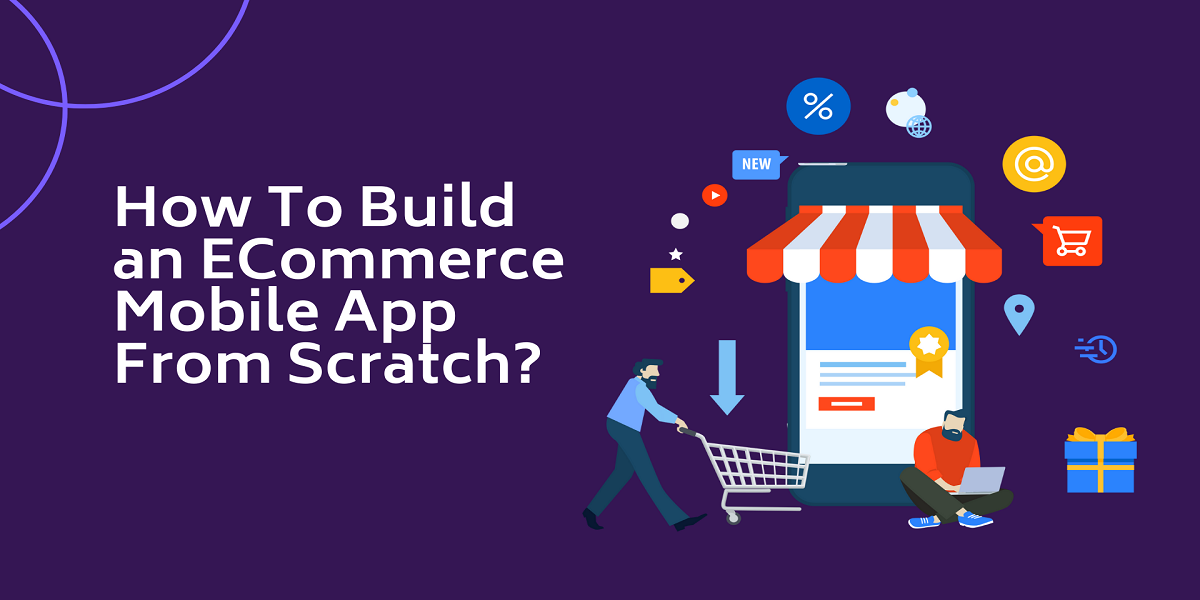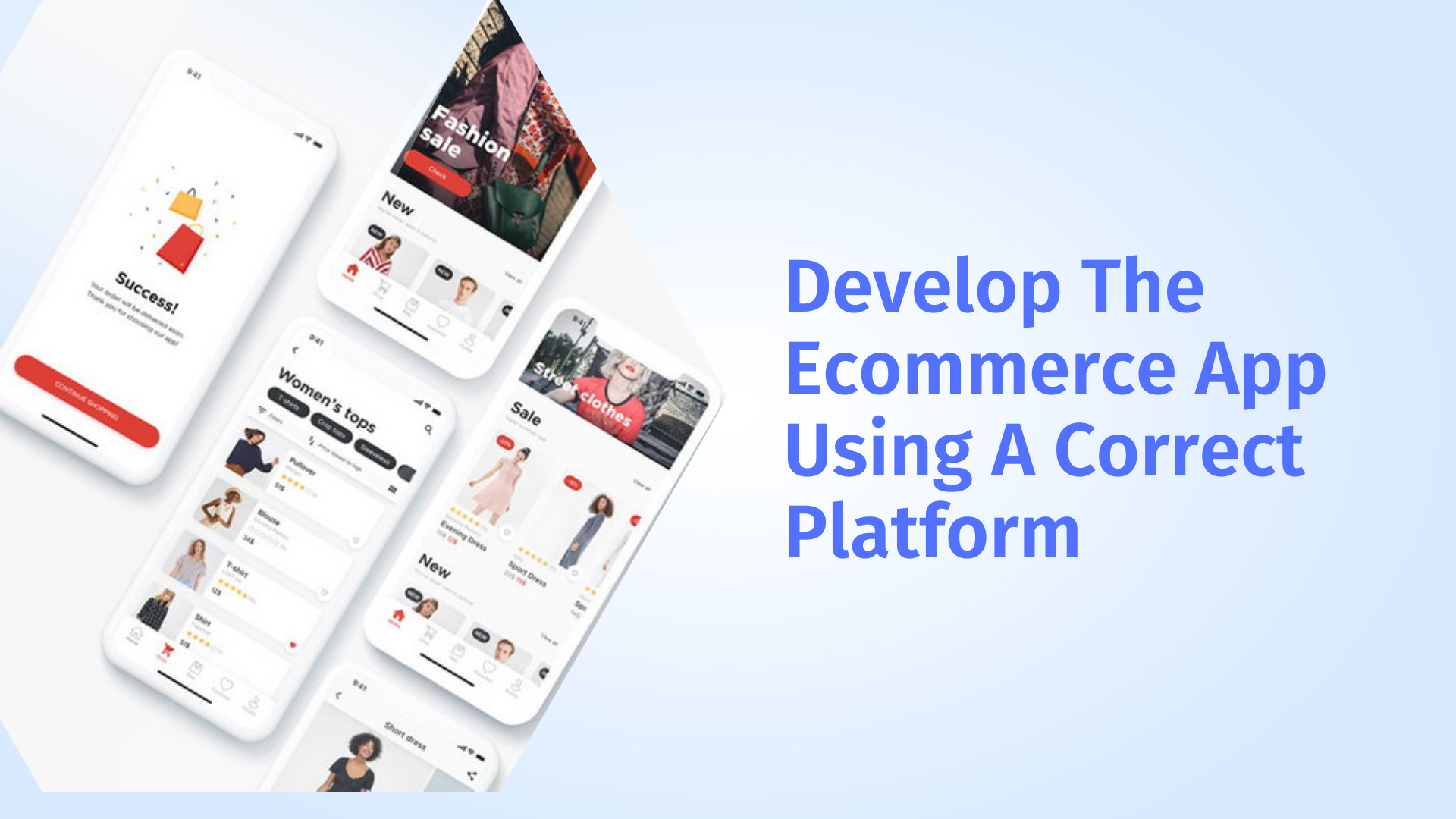How to Build an E-Commerce Mobile App From Scratch?
- By Pranav Thakker
- 18-04-2023
- E-commerce

An e-commerce mobile app is a mobile application that allows customers to purchase products or services online through their smartphones or tablets. They are becoming increasingly popular as more and more people prefer to shop on their mobile devices.
Features play a crucial role in making an e-commerce mobile app popular and functional. A well-designed and the feature-rich app can help to attract and retain users. Moreover, it improves the overall user experience. When developing an e-commerce mobile app, several key features should be included to ensure a positive user experience.
E-Commerce App Features
A Clean And User-friendly Interface:
An e-commerce app design should be clean and user-friendly. The app should be easy to navigate and understand. It must have clear and intuitive buttons and menus.
Search Functionality:
E-commerce app development companies should keep in mind that users have short attention spans. Therefore quick search options should be there in the app. Users should be able to easily search for products or categories of interest and filter their results by price, brand, or other criteria.
Product Information:
In the process of e-commerce application development, the developers have to design product information pages smartly. The app should provide detailed information about each product. This can include product images, descriptions, and customer reviews.
Secure Checkout:
The E-commerce app development structure must include a secure payment feature. Users should be able to purchase products easily and securely, with options for different payment methods and shipping options.
Push Notifications:
E-commerce website owners frequently launch new offers on products. For this purpose, they insist to have a notification feature in the app. An e-commerce mobile app should send push notifications to users to keep them informed about new products, sales, and other promotions.
Account Management:
An e-commerce app design must have multiple options to create different profiles and manage different accounts in a single app. Moreover, users should be able to create and manage their accounts, including the ability to view their order history and track their deliveries.
Customer Support:
An e-commerce mobile app should provide easy access to customer support, such as a help center or live chat.
The Step-by-Step Procedure Of e-commerce mobile app development
The following are some steps to follow for developing a successful e-commerce mobile app.
Define The Project Scope And Objectives:
This step involves clearly outlining what the app will do, who the target audience is, and what features it will have. It is important to consider the specific needs and requirements of the target audience and to identify the key features and functionalities that will be needed to meet those needs.
This may include things like a user-friendly interface, search functionality, product information, secure checkout, and account management. All participants in the project will understand what will be their roles and responsibilities.
It's also important to consider any technical requirements and constraints that may affect the development of the e-commerce mobile app. For example, the platforms it will be developed for, and the programming languages and technologies that will be used.
Research And Analysis:
During this step, an e-commerce app development company should research and analyze existing e-commerce apps to understand their features. This will give an idea about what is currently available in the market and what users expect from an e-commerce mobile app. Additionally, it will help to identify any gaps or opportunities in the market that the app could fill.
It's also important to analyze the target audience and understand their needs, preferences, and behavior. This can be done through surveys, interviews, and online research. By understanding the target audience, you can design an app that meets their needs and provides a great user experience.
In addition, it's important to research the latest trends in e-commerce mobile app development. It will make sure that your app is up-to-date with the latest features and technologies.
Design And Prototyping:
Design and prototyping are the next steps in the e-commerce mobile app development process. This step involves creating wireframes and mockups of the app's interface and user flow.
A Wireframe
It is a basic visual representation of the app's layout and structure. It is used to define the placement of elements such as buttons, text, and images, and to establish the app's overall look and feel. Wireframes are typically created in a simple and low-fidelity format. For example, sketches.
A Mockup
It is a more detailed and high-fidelity version of the wireframe. To establish the app's visual design, a mockup is necessary. It includes colors, typography, and imagery. Mockups are often created in design software such as Adobe XD or Figma. Its main function is to showcase the final visual design of the app.
During this step, it's also important to create a user flow, which is a visual representation of the steps a user will take to accomplish a specific task within the app. This will help to ensure that the app's navigation and user experience are intuitive and easy to use.
Design and prototyping help to get feedback on the e-commerce app design and user experience from potential users or experts.
Develop The E-commerce App Using A Correct Platform:

Developing the e-commerce mobile app using the correct platform is a crucial step. It is a stage where the expert team of developers code, test, and debug the app. The platform chosen will determine the programming languages, tools, and frameworks used to develop the app. It's important to choose a platform that will provide the best user experience, meet the app's requirements and be cost-effective.
There are several platforms available for e-commerce app development, such as native app development, hybrid app development, and Progressive Web App (PWA) development.
Native App Development
It involves developing an app specifically for a particular platform such as iOS or Android, using the platform's specific programming languages (Swift and Objective-C for iOS, Java, and Kotlin for Android). Native apps are generally faster and more responsive and can take full advantage of the device's features and capabilities.
Hybrid App Development
It allows for the development of a single codebase that can run on multiple platforms. Developers can achieve this by using cross-platform frameworks such as React Native, Xamarin, and Ionic. Hybrid apps are typically less expensive and faster to develop than native apps, but may not perform as well.
Progressive Web App (PWA)
It is a web application that can be accessed through a web browser. It provides a user experience that is similar to a native app. Moreover, developers can develop PWAs using standard web technologies such as HTML, CSS, and JavaScript. Users can install it on devices without the need for an app store. PWAs can be a good choice for e-commerce apps that don't require access to device-specific features or data.
Choosing the right platform will depend on the app's specific requirements. For example, the target audience, budget, and features. It's important to choose a platform that will provide the best user experience and be cost-effective.
Testing And Quality Assurance:
During the testing phase, an e-commerce mobile app is run through a series of tests to identify any bugs or issues. This can include functional testing, which checks that the app is performing as expected. Moreover, it includes performance testing. It checks that the app can handle the expected load and usage.
The QA team of the mobile app development company will review the results and provide feedback to the development team. To release the app to the public, the expert team should fix all the issues in the app.
It's also important to test the app on different devices and platforms. It is important to ensure that it is compatible and functioning correctly on a variety of devices. This can include testing on different screen sizes and resolutions, and different operating systems.
Deployment And Maintenance:
Deployment typically involves submitting the app to app stores, such as the Apple App Store or Google Play Store. It is a step for review and approval. Once the app gets approval, users can download it.
To ensure that the app continues to function correctly, it must have a maintenance contract with the company. Mobile app development companies must address any issues that may arise after deployment
This can include releasing updates and patches to fix bugs and adding new features and functionality. Moreover, it includes addressing any security vulnerabilities.
Moreover, regular monitoring is also an important aspect of maintenance. It allows developers to identify and address any issues as soon as they arise. This can include monitoring app usage, user engagement, and performance metrics.
Final Word
In conclusion, we can say that an e-commerce mobile app development can be a complex process, but by following these steps and including the key features outlined above, it is possible to create a high-quality, user-friendly app that will provide a great shopping experience for customers.
Are you looking for a complete solution for your e-commerce mobile app development? Sufalam Technologies is a one-stop solution for all your application development needs. Contact the team for a better future and growth.



.jpg)
.jpg)
.jpg)
